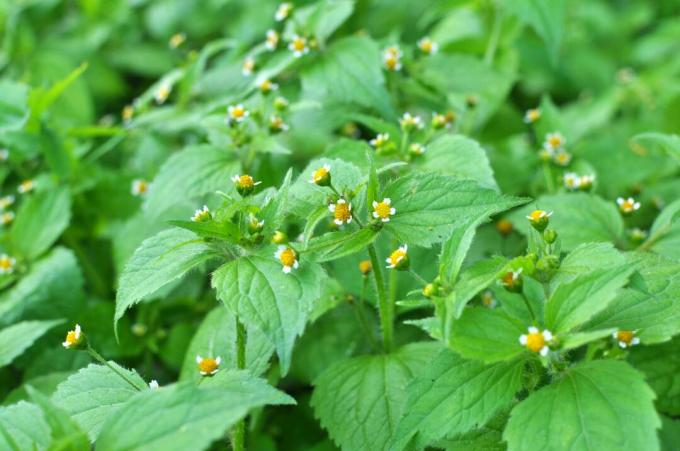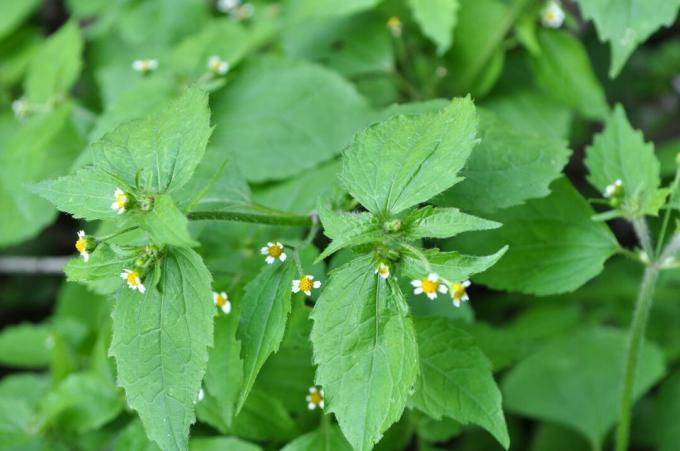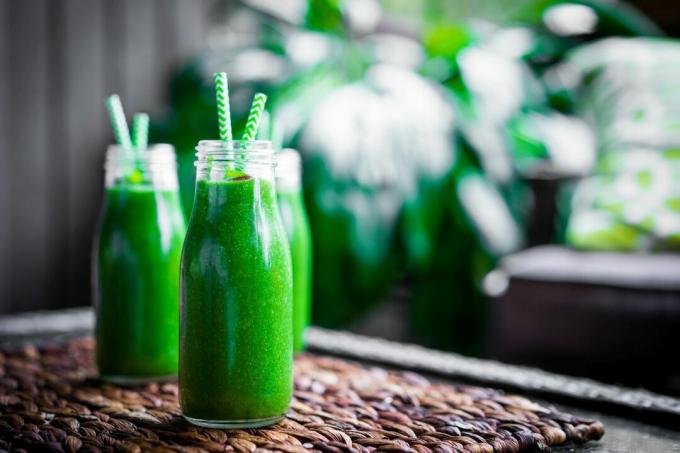The French herb is often mistaken for a weed and ends up on the compost. In fact, the French herb is a nutrient bomb that can be useful to us.

The French herb (Galinsoga parviflora) is an inconspicuous plant that can be a chagrin for the gardener. We can see the French herb as a weed in our garden or as an enrichment for our menu and the herbal pharmacy at home.
contents
- Recognize French herbs: origin and properties
- French herb as a weed
- Is French herb edible or poisonous?
- Use and healing effects of French herbs
Recognize French herbs: origin and properties
The plant has already traveled a long way, because its area of origin is the Mesoamerican highlands in Mexico and Central America. Today the French herb is a widespread species native to North America, Europe, Africa, Asia, and islands in the Pacific Ocean. It is considered a weed in at least 40 countries, mostly in the temperate and subtropical zones, but also in higher elevations in many tropical countries. Humans have made a significant contribution to the spread of the French herb through introductions.
The French herb is a very competitive, frost-sensitive, annual wild plant from the sunflower family (Asteraceae) with a short life cycle, often less than 40 days, resulting in three to four generations per year be able. It prefers fresh, warm, and nutrient-rich locations, but can adapt to different environments. The rampant spread of the French herb makes it a disliked plant for farmers and gardeners. So the French herb was given unpleasant names such as garden plague or devil's herb. There are also friendlier names such as small-flowered button herb. Another type of button herb can also be found here, the hairy button herb, which we also call shaggy French herb.

How do I recognize French herbs? French cabbage is a herbaceous, upright plant that grows to a height of 20 - 80 cm, depending on the growing conditions. In the upper part, the French herb is sparsely covered with fine, thick hair. The leaves are arranged simply opposite, the lower leaves with petioles, the upper without. The leaf blade is oval to oblong with a sharp tip and blunt teeth on the edge. The inflorescence consists of typical composite flowers, each 5 - 8 mm in size and sitting on long axillary pedicels. The tiny flower clusters have five three-toothed, white petals around a yellow center. The flowering period is between July and September.

Where does the name French herb come from? The terms French herb and button herb are associated with the Napoleonic wars. The plant spread invasively at this time and the small flowers also look like the buttons on the French soldier's uniform.
Confusion of French herb:
- With the hairy button herb: They are related to each other and often appear together.
- When young, the French herb looks similar to other summer flowers, usually it is confused with sage or liver balm.
French herb as a weed
The French herb prefers to colonize open spaces in gardens and vegetable patches, and it also grows frequently under perennials and shrubs. Because every single plant can produce up to 400,000 seeds and spread rapidly and massively. French herb is a very competitive, fast-spreading plant, so it is often the dominant species in a field and inhibits the growth of crops.
Fight French herb: Once the plant is established in your garden it will need to be weeded, preferably before flowering. Because the tiny flower clusters produce an abundance of seeds that ripen almost immediately. So the usual weed control strategy, which is to remove the weeds before the flowers fade and the seeds mature, doesn't work here. Once the plant has flowered, it is well on its way to producing the next generation of French herbs.
Also, before the French herb germinates, mulching materials such as Bark mulch against weeds be used. We recommend applying a layer of mulch between 7 and 15 cm high to naturally suppress weed growth. Our sustainably produced, for example, is a biological mulch material Plantura organic pine bark which, with its coarse structure, can be used for a long time and also looks natural.
Tip: The French herb can be used for green manure, but then it must be properly milled under, not just incorporated, otherwise it will just continue to grow. In addition, it should be mowed before flowering so that countless seeds are not brought in when milling under.
Is French herb notifiable? Although the French herb is invasive, it does not cause as much economic damage as it is to be classified as a reportable plant.
Is French herb edible or poisonous?
All parts of the plant are edible and can be consumed by humans and animals. Rodents and turtles like to consume the plant fresh.
Use and healing effects of French herbs
In culinary terms, the young leaves, stems and flowers can be used as an ingredient for smoothies, salads, stews or juices. It can also be prepared as leafy vegetables like spinach. When dried, the plant is also used as a soup spice or tea.
A green smoothie with French cabbage is recommended for breakfast or in between. To do this, first puree a banana for the sweetness and two handfuls of French cabbage in a blender. Then add a large handful of fruit of your choice, such as pineapple or strawberries, and mix the smoothie until you can no longer see any pieces. If the fruits are frozen beforehand, you can make a delicious and healthy ice cream this way.

The French herb is a real nutrient bomb and should be served more often as a local superfood. It is one of the most iron-rich plants in our fields and also contains a lot of calcium, magnesium, vitamins A and C.
The medicinal properties of the French herb are not yet well known in this country, but in other regions of the world it is an important plant in the medicine cabinet. It can be used to neutralize nettle stings or help stop bleeding from cuts and wounds. In India, for example, a salted extract from the leaves is used for diarrhea, fever and vomiting, as well as for boils and chickenpox. In Colombia, the boiled leaves of the French herb are drunk against excess stomach acid.
In addition to French herbs, there are many other plants that we consider weeds, but which can be an asset to our kitchen. Here we provide you with more useful weeds before.
